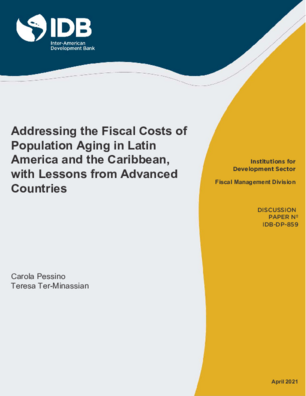Addressing the Fiscal Costs of Population Aging in Latin America and the Caribbean, with Lessons from Advanced Countries
Date
Apr 2021
This paper presents projections for 18 Latin America and Caribbean countries of pensions and health expenditures over the next 50 years, compares them to advanced countries, and calculates estimates of the fiscal gap due to aging. The exercise is crucial since life expectancy is increasing and fertility rates are declining in virtually all advanced countries and many developing countries, but more so in Latin America and the Caribbean. While the populations of many of the regions countries are still relatively young, they are aging more rapidly than those in more developed countries. The fiscal implications of these demographic trends are severe. The paper proposes policy and institutional reforms that could begin to be implemented immediately and that could help moderate these trends in light of relevant international experience to date. It suggests that LAC countries need to include an intertemporal numerical fiscal limit or rule to the continuous increase in aging spending while covering the needs of the more vulnerable. They should consider also complementing public pensions with voluntary contribution mechanisms supported by tax incentives, such as those used in Australia, New Zealand (Kiwi Saver), and the United States (401k). In addition, LAC countries face an urgent challenge in curbing the growth of health care costs, while improving the quality of care. Efforts should focus on improving both the allocative and the technical efficiency of public health spending.




